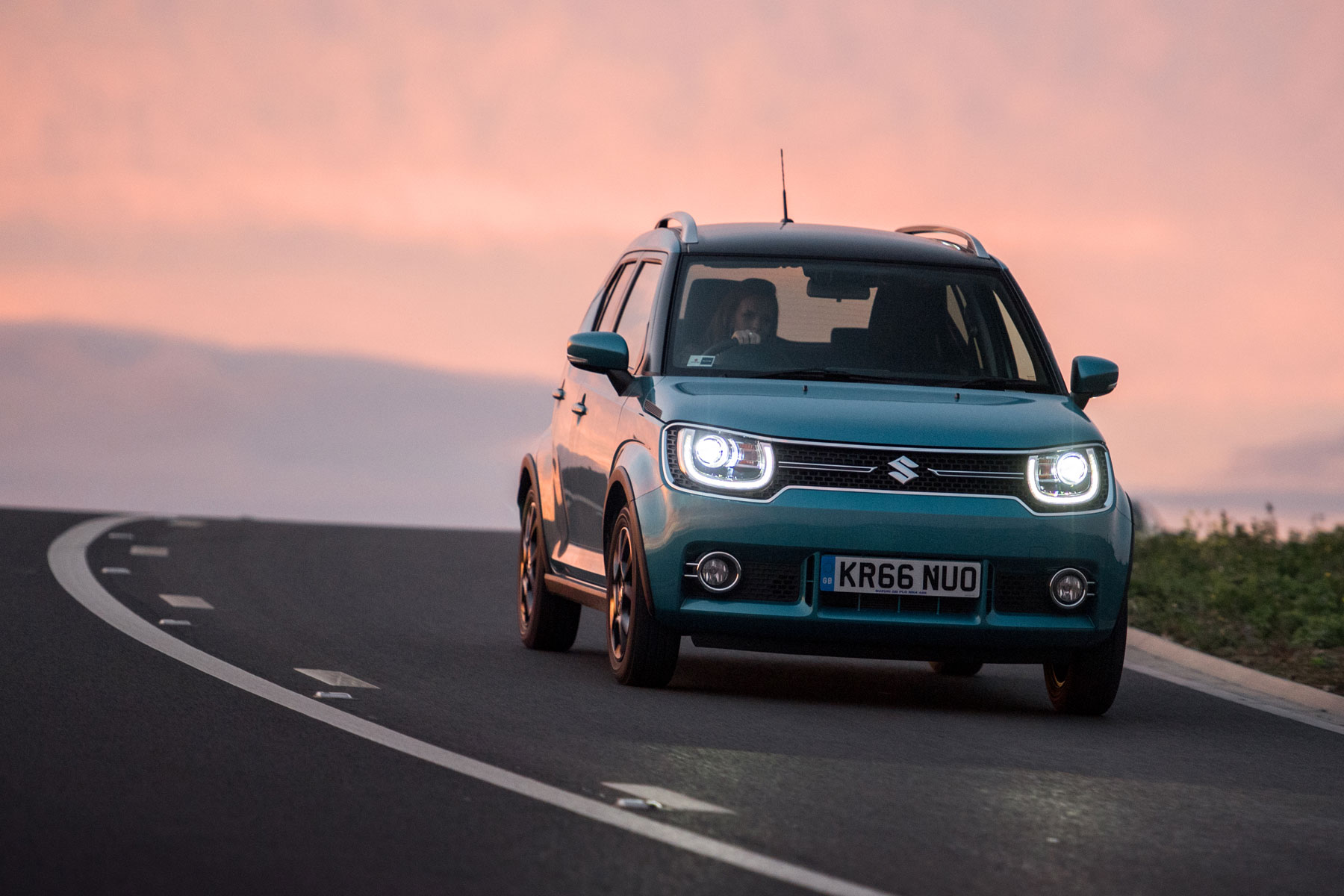
Cheeky, cute, retro: three words we’d use to describe the reborn Suzuki Ignis. In fact, the Ignis has so much personality, we’re reluctant to be negative for fear of hurting its feelings.
- Suzuki Ignis, revised S-Cross confirmed for Paris 2016
- Suzuki Vitara S: Two-Minute Road Test
- Read another car review on Motoring Research
A car review must be rational, of course, but the Ignis is likely to be the most emotionally-driven car in the Suzuki range. If you like the looks – and we suspect most will either love or hate them – you’re unlikely to be disappointed by the rest of the package.
As a package, it’s a hard car to define. During the launch, Suzuki labelled it a B-segment SUV, compact crossover, city car and small SUV. It’s enough to give a car an identity crisis. But does it really matter which hole this square box falls into? Not really. Occasionally, it’s nice to bust a segment or two.
Just think of it as a slice of positivity at the end of a gloomy year. Leaving our emotional attachment at the door, we’ll attempt to provide some rational thinking.
Gee whizz, it’s cool
About that styling. Suzuki has managed to strike a neat balance between retro and modern, adding a number of touches to provide subtle hints to the company’s past. Enthusiasts will notice the slits on the C-pillar and the design of the side windows – a nod in the direction of the SC100, also known as the Whizzkid.
Other influences are less obvious, like the clamshell bonnet (Vitara) and blacked-out A- and B-pillars (Swift). As for the LED headlights (standard on the top trim model), it’s said that they’re influenced by Johnny Depp’s glasses. Hmm.
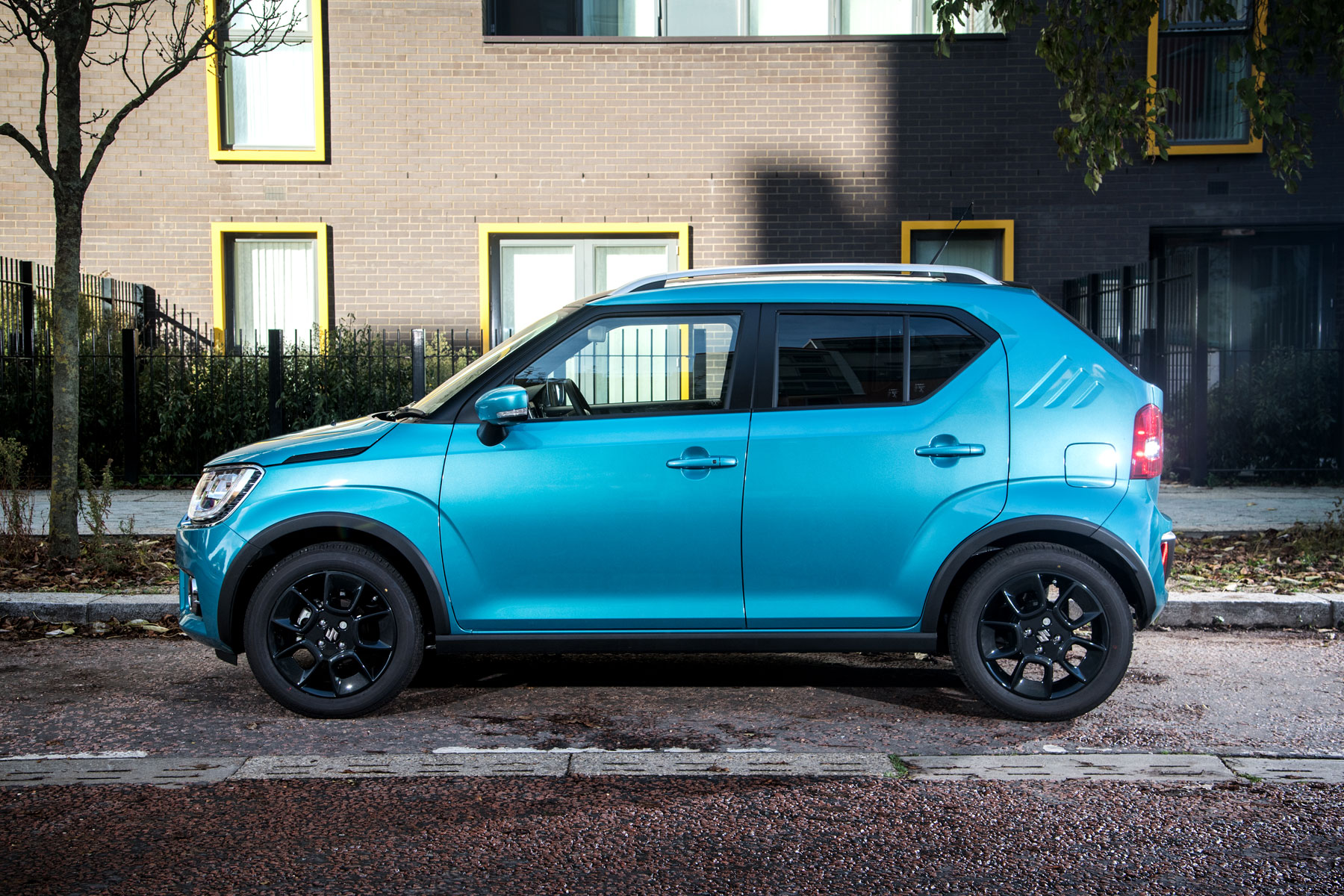
To our eyes, the result is almost perfect. In profile, the Ignis is a match for any new car at any price, while the face is 100% Suzuki and 100% cheerful. See an Ignis in your rear-view mirror and, rather than feel hassled, you’ll feel like you’re being tickled.
It’s round the back where things start to go awry. It’s a curious look, dominated by a large black panel and four-piece rear lights. The general oddness is accentuated by the wheelarch extensions, standard on all but the entry-level Ignis SZ3.
But overall, the Ignis is like a positive emoji on wheels. Opt for one of the new metallic colours – Neon Blue, Flame Orange Pearl and Helios Gold – and the Ignis has the potential to add cheer to even the dreariest of things. Yes, including 2016.
The feelgood factor continues inside
Of course, going to the trouble of creating the look of a four-wheeled smiley would be wasted if the interior was as exciting as a vanilla sandwich. Fortunately, the cabin is dripping in charm.
There’s no disguising the fact that the Ignis is built to a budget. Suzuki hasn’t released official prices, but you can bank on paying between £10,000 and £13,500 for your three-dimensional emoji.
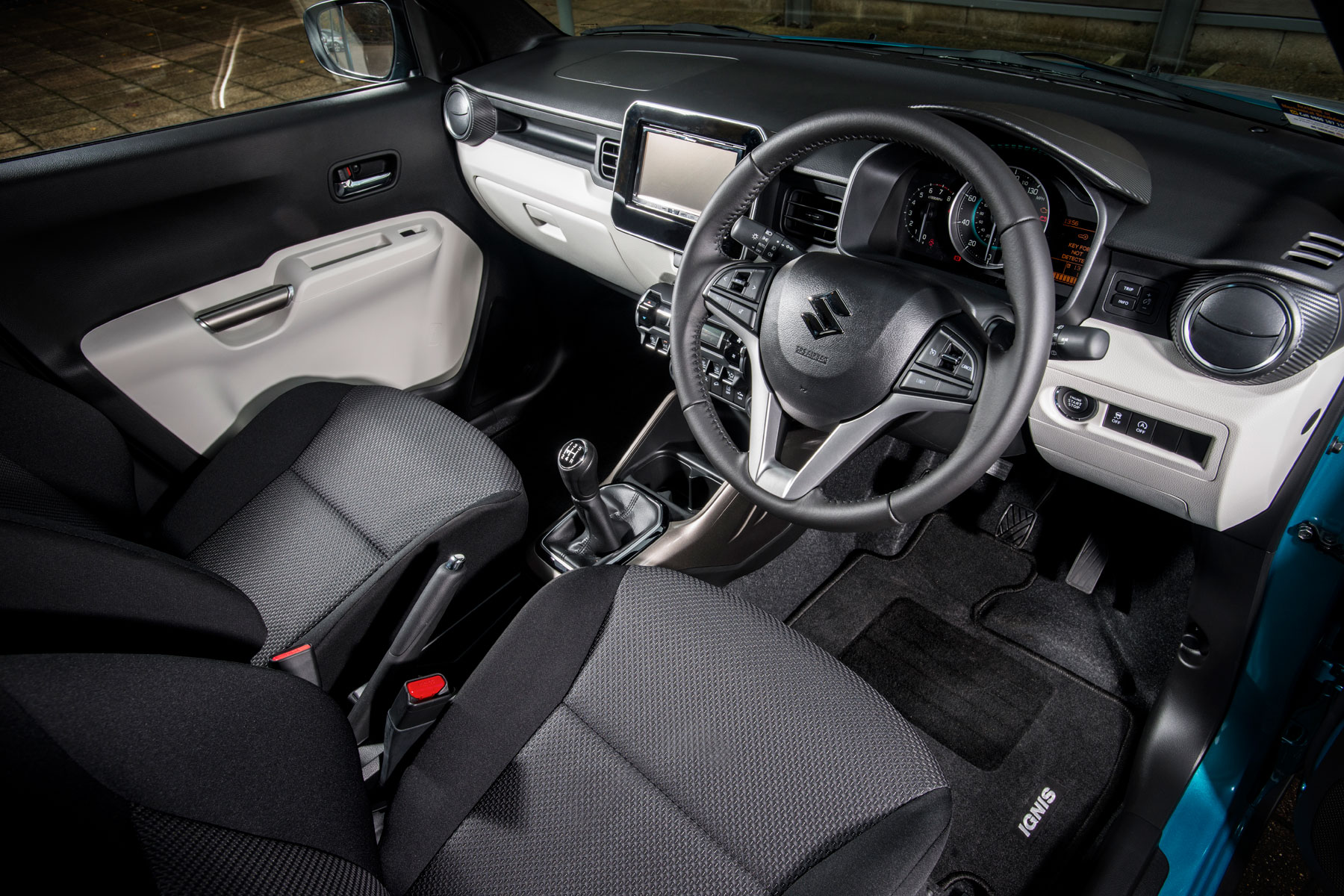
As a result, you shouldn’t expect a sea of soft-touch plastics and Germanic levels of fit and finish. But cleverly – and no doubt inspired by Citroen’s treatment of the C4 Cactus – Suzuki has ensured the touch-points and most visible areas are pre-loaded with a feelgood factor.
The round air conditioning panel, neat toggle switches, Whizzkid-inspired slits by the footwell, plus white door cards and lower dashboard lift the gloom and give the Ignis an edge over its more rational stablemates (Celerio and Baleno). Even the bonnet release catch is a dinky pull button.
Crucially, the interior door grips feel good to the touch and are either orange or titanium, depending on the exterior colour.
Loaded with toys and goodies
It’s well-equipped, too, with the mid-spec SZ-T – likely to be the biggest seller – featuring air conditioning, DAB digital radio, Apple CarPlay and Mirrorlink, sat nav, rear-view camera, 16-inch alloy wheels and individually sliding rear seats.
An ability to slide 165mm forward and back means you can choose between rear legroom and boot space. In their rearmost position, the boot space is 267 litres, extending to 514 litres with the seats folded down. If you’re looking for the option to carry an additional passenger, you’re limited to the SZ3, with its rear bench seating three people.
The tall and upright dimensions means there’s plenty of headroom for both front and rear seat passengers, so if you fancy donning a party hat for the drive to work, the Ignis is the car for you. It’s worth noting that the super-wide C-pillars – for all their glory – do serve to restrict rearward visibility, while the side window design will obstruct the view from the rear seats. The rear camera – standard on all but the SZ3 model – eliminates one of these problems.
The mildest of hybrids
Your drive to work will be powered by Suzuki’s familiar 1.2-litre Dualjet engine, developing 90hp and 88lb ft of torque. Hardly earth-shattering figures, but then in its most basic form the Ignis weighs a mere 810kg.
In standard guise, you’ll need to push the Dualjet to the brink of screaming to get the most from it, as highlighted by the 0-62mph time of a leisurely 13.5 seconds.
If you’re after a little more poke, help is at hand in the form of the SHVS mild hybrid, as tested here. The belt-driven integrated starter generator assists the engine during take off and acceleration, shaving a couple of seconds off the 0-62mph time.
A compact lithium-ion battery sits beneath the passenger seat and is regenerated during braking and deceleration. Yet, despite the improved performance and lower C02 emissions (97g/km compared to 104g/km), Suzuki is forecasting a 10-15% share of sales for the SHVS model.
Given the relatively low – predicted to be £500 – increase in price over the standard 1.2-litre model, we suspect the take-up might be higher than Suzuki says. The additional torque is welcome, while the SHVS model is the only Ignis to dip below 100g/km CO2, at 97g/km.
Fun, if you know where to look
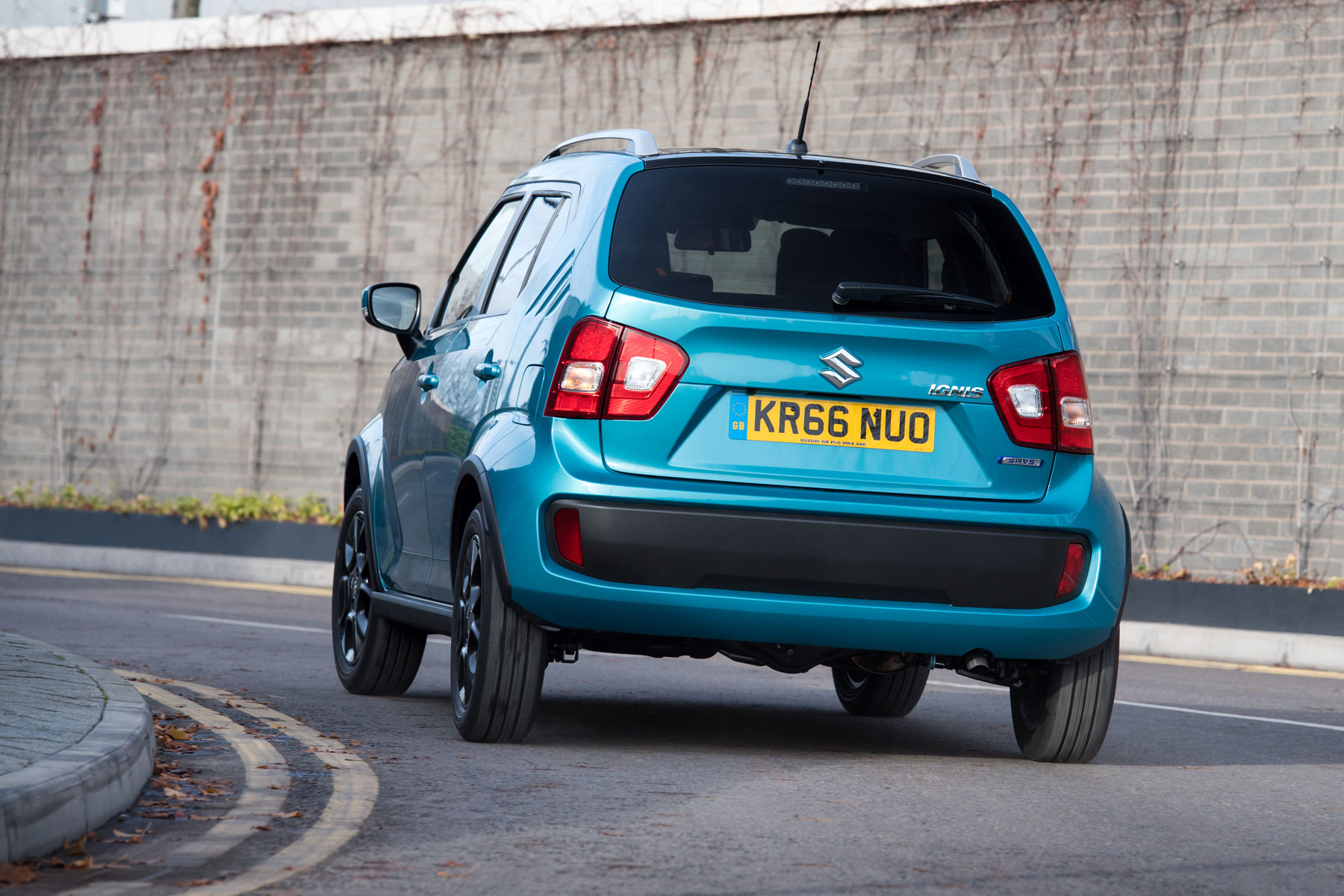
On the road, the Ignis behaves pretty much as you’d expect a tall, slab-sided, lightweight and short-wheelbase small car to behave. The ride is bouncy, bordering on uncomfortable on certain roads, while the Ignis will lean heavily if you get a little over-enthusiastic through the bends.
The steering is too vague and inconsistent to inspire much in the way of confidence, while the tall and slightly unsupportive seats provide the feeling that you’re sitting on rather than in the Ignis. A pure driver’s car this is not.
But this doesn’t mean you can’t have fun in an Ignis. The engine is willing enough, and – if you’re prepared to put up with the strained engine note as you hit peak power at 6,000rpm – there’s genuine joy to be found in maintaining momentum through a series of corners.
It helps that the five-speed gearbox is surprisingly sweet, while the low kerb weight (our fully optioned-up SZ5 hybrid weighed in at a mere 870kg) and a lorry-load of grip enabled us to enjoy a spirited drive over an Italian mountain pass.
That the Ignis is so small (3,700mm length, 1,690mm width, 1,595mm height) certainly helps when you’re faced with a series of oncoming Fiat Pandas straddling the centre white line on the edge of a 1,800-metre mountain.
A car without peers?
Which brings us neatly to the issue of competitors. It would be too easy to say that the Suzuki Ignis is without rivals, but it’s difficult to find a precise reference point. The first car that springs to mind is the Fiat Panda 4×4, especially when you take into account the fact that the Ignis is available with Suzuki’s Allgrip four-wheel-drive system.
Unlike the Panda 4×4, there’s no increase in ride height, so you’re stuck with 180mm of ground clearance. Furthermore, the Allgrip system eats away at the luggage capacity, robbing it of 63 litres of boot space.
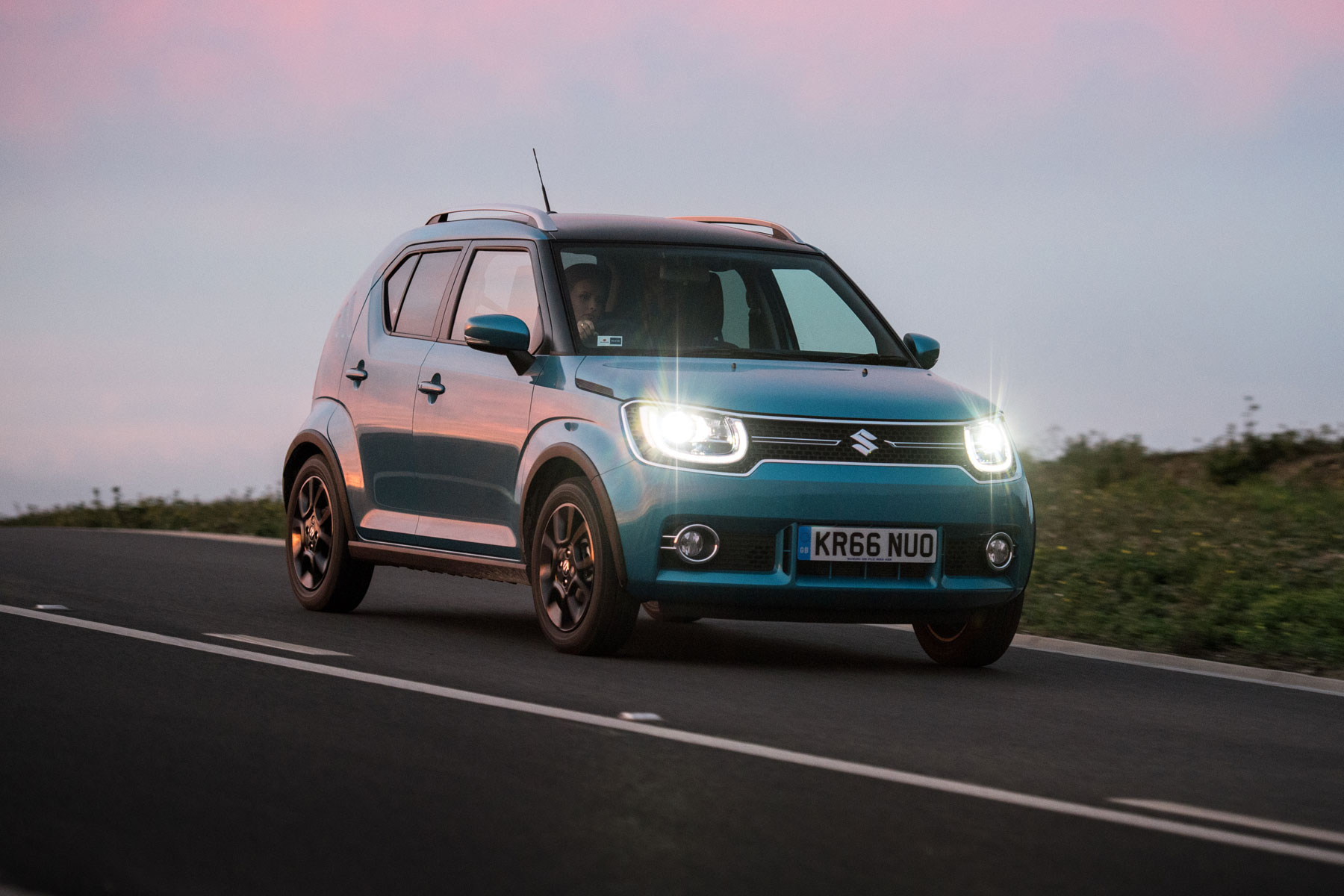
As you’d expect, the four-wheel-drive Ignis – which sends torque to the rear wheels via a viscous coupling – is also less efficient and slower than front-wheel-drive variants. If you want a proper fun-size off-roader, the Fiat Panda 4×4 remains the king of the mountain.
Our advice would be to enjoy the Ignis as a front-drive small car that’s as home in the city as it is on the motorway. It felt surprisingly long-legged when we were dicing with death on an Italian autostrada, with only a touch of wind and road noise blotting an otherwise excellent copybook.
Safety in numbers
It feels grown up, too, with the availability of Dual Camera Brake Support (standard on SZ5, optional on SZ3 and SZ-T). It’ll warn the driver and apply the brakes if it suspects a collision is imminent, and also packs lane-departure warning and weaving alert functions.
We tried the lane-departure warning system, which vibrates the steering wheel and displays a warning message to alert the driver. The vibrations are subtle, but there’s no missing the Christmas lights on the dashboard.
Hot off the press: Euro NCAP has just released the safety rating of the Suzuki Ignis. A middling three stars for the standard Ignis, which rises to the maximum five stars with the optional safety pack. It’s not too tricky to make a rational decision when presented with this kind of information.
Emotionally, the Ignis is almost perfect
But that’s enough rational thinking for one review; let’s get back to being emotional. Of all the cars in the Suzuki range, this is the one you’re most likely to buy with your heart and not your head.
Sure, there’s some rational thinking involved: a low price tag, 61.4mpg for the 1.2-litre, 65.7mpg for the mild hybrid, a huge dollop of practicality, and an extensive list of toys are just a few aspects that will appeal to your head.
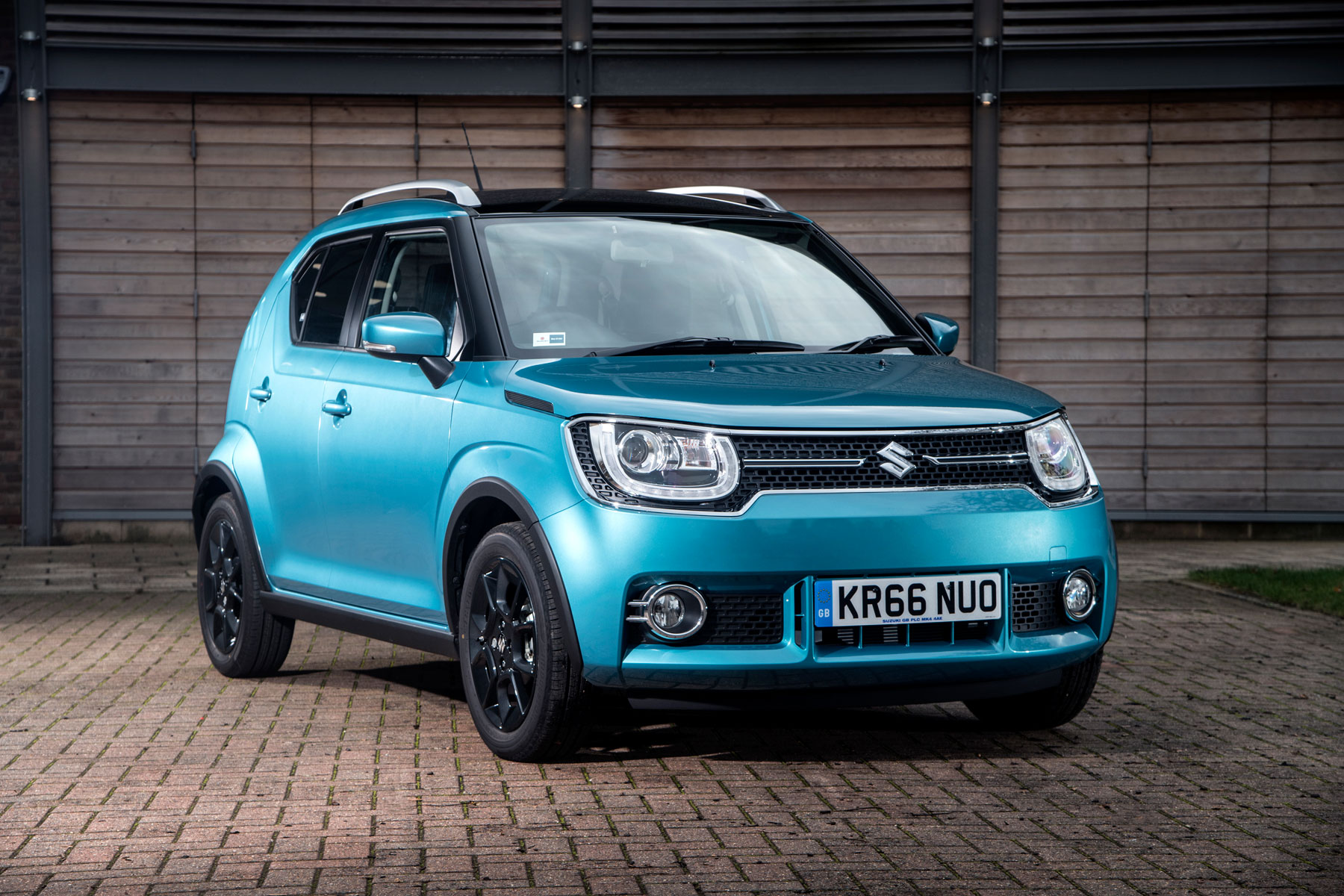
But it’s the styling, interior detailing, personalisation options, the range of colours and driving experience that will tug on your heartstrings. You might not like the look of the Ignis, and that’s your prerogative, but Suzuki must be applauded for blazing a different trail with the cheeky styling.
Boldy, Suzuki is going after MINI and Fiat 500 customers with the Ignis, as it seeks to introduce a younger audience to the brand. It deserves to succeed, as the Ignis is one of the freshest and most appealing new cars we’ve driven in 2016.